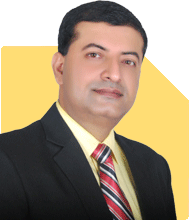मेरी उम्र 47 वर्ष है। कुछ आर्थिक मजबूरियों के कारण मैंने पिछले एक साल से ही म्यूचुअल फंड (एसआईपी) में निवेश करना शुरू किया है। फिलहाल मैं विभिन्न एसआईपी में हर महीने 33,000 रुपये निवेश कर रहा हूं। विवरण इस प्रकार हैं: कोटक महिंद्रा मार्केट ग्रोथ (1500 रुपये), आदित्य बीएसएल लो ड्यूरेशन ग्रोथ (1400 रुपये), एचडीएफसी मिड-कैप ग्रोथ (12000 रुपये), निप्पॉन इंडिया लार्ज कैप ग्रोथ (3000 रुपये), बंधन स्मॉल कैप (5000 रुपये), मोतीलाल ओसवाल फ्लेक्सीकैप ग्रोथ (5000 रुपये), आईसीआईसीआई प्रू फ्लेक्सीकैप ग्रोथ (5000 रुपये)। मैंने पिछले साल से पीपीएफ में भी सालाना 1,50,000 रुपये निवेश करना शुरू कर दिया है। क्या मैं 62 वर्ष की आयु तक सेवानिवृत्त होने पर इस निवेश से अपना गुजारा कर पाऊंगा?
Ans: मैं आपकी सेवानिवृत्ति योजना में आपकी सहायता कर सकता हूँ।
आपने अपने निवेशों का बहुत विस्तृत विवरण दिया है।
आपने 47 वर्ष की आयु में धन अर्जित करने का दृढ़ संकल्प भी दिखाया है।
यह अपने आप में एक बड़ी सकारात्मक शुरुआत है।
आपके वर्तमान प्रयास
आपने दायित्वों के कारण देर से शुरुआत की।
यह समझ में आता है।
फिर भी आपने जिम्मेदारी संभाली।
आप अब हर महीने 33,000 रुपये का निवेश करते हैं।
आप पीपीएफ में प्रति वर्ष 1,50,000 रुपये का निवेश भी करते हैं।
आप अनुशासन का पालन करते हैं।
आप निरंतरता बनाए रखते हैं।
ये आदतें सबसे महत्वपूर्ण हैं।
ये आदतें आपकी सेवानिवृत्ति में सहायक होंगी।
इस नींव के लिए आप प्रशंसा के पात्र हैं।
आपका वर्तमान निवेश मिश्रण
आप विभिन्न इक्विटी फंडों में निवेश करते हैं।
आप एक कम अवधि के डेट फंड में भी निवेश करते हैं।
आप मिड कैप, लार्ज कैप, फ्लेक्सी कैप और स्मॉल कैप में निवेश करते हैं।
इससे आपको कुछ विविधता मिलती है।
आप पीपीएफ में भी निवेश करते हैं।
पीपीएफ सुरक्षा प्रदान करता है।
पीपीएफ स्थिर वृद्धि देता है।
यह मिश्रण संतुलन बनाता है।
कृपया एक बात ध्यान दें।
आप डायरेक्ट प्लान में निवेश करते हैं।
बाहर से डायरेक्ट प्लान सस्ते लगते हैं।
लेकिन ये हमेशा दीर्घकालिक निवेशकों के लिए फायदेमंद नहीं होते।
कई निवेशक गलत फंड चुनते हैं।
कई निवेशक बाज़ार का गलत तरीके से विश्लेषण करते हैं।
कई निवेशक गलत समय पर निवेश निकालते हैं।
यह बचत किए गए व्यय अनुपात से कहीं अधिक रिटर्न को प्रभावित करता है।
सीएफपी (CFP) के सहयोग से एमएफडी के माध्यम से नियमित प्लान मार्गदर्शन प्रदान करते हैं।
नियमित प्लान आपको सही रास्ते पर बने रहने में भी मदद करते हैं।
डायरेक्ट फंड में व्यवहारिक अंतर एक बड़ी लागत है।
इस प्रकार, सीएफपी (CFP) के समर्थन वाली नियमित योजनाएँ दीर्घकालिक निवेशकों के लिए बेहतर काम करती हैं।
वे गलतियों को सुधार सकते हैं।
वे परिसंपत्ति मिश्रण में मदद कर सकते हैं।
बाजार में गिरावट के दौरान वे आपको स्थिर रहने में मदद कर सकते हैं।
अधिकांश मामलों में, इससे प्रत्यक्ष फंडों की तुलना में अधिक अंतिम संपत्ति प्राप्त होती है।
“आपकी सेवानिवृत्ति आयु का लक्ष्य
“आप 62 वर्ष की आयु में सेवानिवृत्त होने की योजना बना रहे हैं।
आप अभी 47 वर्ष के हैं।
“आपके पास 15 वर्ष शेष हैं।
“15 वर्ष अभी भी एक मजबूत समय सीमा है।
आप चक्रवृद्धि ब्याज को अच्छी तरह से काम करने दे सकते हैं।
“आपकी पूंजी 62 वर्ष की आयु तक काफी बढ़ सकती है।
आप इस दौरान अपनी बचत दर में भी सुधार कर सकते हैं।
“यह आकलन करना कि क्या आपकी वर्तमान योजना सेवानिवृत्ति के लिए उपयुक्त है
“ आकलन करने के लिए कई पहलू हैं।
आपको अपनी बचत दर पर ध्यान देना होगा।
“ आपको अपनी विकास दर पर ध्यान देना होगा।
आपको अपने भविष्य के जीवनशैली खर्चों पर विचार करना होगा।
आपको मुद्रास्फीति पर ध्यान देना होगा।
आपको सेवानिवृत्ति के बाद की आय की आवश्यकता पर विचार करना होगा।
आपको यह देखना होगा कि आपकी वर्तमान योजना इससे मेल खाती है या नहीं।
फिलहाल, आपका कुल वार्षिक निवेश है:
→ एसआईपी में प्रति माह 33,000 रुपये।
यानी प्रति वर्ष 3,96,000 रुपये।
साथ ही प्रति वर्ष पीपीएफ में 1,50,000 रुपये।
इस प्रकार आपका कुल वार्षिक निवेश 5,46,000 रुपये है।
यह एक अच्छी राशि है।
यह आपकी सेवानिवृत्ति की यात्रा में सहायक हो सकता है।
"अपने निवेश मिश्रण में इक्विटी फंड को समझना
→ आप मिड कैप में निवेश करते हैं।
मिड कैप अच्छी वृद्धि दे सकता है।
मिड कैप में भी अधिक उतार-चढ़ाव देखने को मिलते हैं।
आप स्मॉल कैप में निवेश करते हैं।
स्मॉल कैप सबसे अस्थिर होती है।
लंबे समय तक निवेश करने पर यह उच्च प्रतिफल दे सकती है।
लेकिन इसके लिए धैर्य की आवश्यकता होती है।
आप लार्ज कैप में निवेश करते हैं।
लार्ज कैप स्थिरता प्रदान करती है।
आप फ्लेक्सी कैप में निवेश करते हैं।
फ्लेक्सी कैप फंड रणनीति में बदलाव करते हैं।
फ्लेक्सी कैप फंड प्रबंधकों को अधिक नियंत्रण प्रदान करते हैं।
भारतीय बाजारों में सक्रिय प्रबंधन उपयोगी है।
फंड प्रबंधक विभिन्न मार्केट कैप में निवेश कर सकते हैं।
वे अच्छे सेक्टर चुन सकते हैं।
इससे प्रतिफल की संभावना बढ़ जाती है।
यह एक ऐसा लाभ है जो इंडेक्स फंड में नहीं होता।
इंडेक्स फंड केवल इंडेक्स की नकल करते हैं।
इंडेक्स फंड कमजोर कंपनियों से दूर नहीं रहते।
इंडेक्स फंड समझदारी भरे निर्णय नहीं ले सकते।
इंडेक्स में उतार-चढ़ाव होने पर इंडेक्स फंड की लागत भी बढ़ जाती है।
एक्टिव फंड नुकसान से सुरक्षा प्रदान करते हैं।
एक्टिव फंड बेहतर अवसर तलाश सकते हैं।
यह दीर्घकालिक संपत्ति निर्माण के लिए सहायक है।
इसलिए एक्टिव फंड की ओर आपका रुझान सही है।
“अपने पोर्टफोलियो में पीपीएफ को समझना
आपका पीपीएफ स्थिरता प्रदान करता है।
यह सुनिश्चित वृद्धि देता है।
यह कर लाभ भी प्रदान करता है।
यह आपकी सेवानिवृत्ति निधि का एक स्थिर हिस्सा बनाता है।
यह आपके पोर्टफोलियो में समग्र जोखिम को कम करता है।
यह लंबे समय तक अच्छा प्रदर्शन करता है।
आपने एक स्थिर दीर्घकालिक परिसंपत्ति का चयन किया है।
यह सेवानिवृत्ति के लिए लाभकारी है।
“ध्यान देने योग्य कमियां
आपके फंड बिखरे हुए हैं।
आपने बहुत सारी योजनाएं ले रखी हैं।
प्रत्येक अतिरिक्त योजना अन्य योजनाओं के साथ ओवरलैप करती है।
इससे प्रभाव कम हो जाता है।
– इसे ट्रैक करना भी मुश्किल हो जाता है।
आप अपनी योजनाओं की संख्या कम कर सकते हैं।
अधिक केंद्रित मिश्रण से प्रगति सुचारू हो सकती है।
पुनर्संतुलन आसान हो जाता है।
आप कम फंड रख सकते हैं लेकिन परिसंपत्ति वितरण बनाए रख सकते हैं।
आप प्रत्येक फंड को एक उद्देश्य से भी जोड़ सकते हैं।
आपको अपनी सेवानिवृत्ति आय की आवश्यकता के बारे में स्पष्टता होनी चाहिए।
कई निवेशक इसे अनदेखा कर देते हैं।
आपको पता होना चाहिए कि 62 वर्ष की आयु में आपको प्रति माह कितने पैसे की आवश्यकता होगी।
आपको मुद्रास्फीति को ध्यान में रखना होगा।
आपको स्वास्थ्य संबंधी आवश्यकताओं को भी ध्यान में रखना होगा।
आपको जीवनशैली के लक्ष्यों को भी ध्यान में रखना होगा।
“आपकी भविष्य की जीवनशैली की लागत
मुद्रास्फीति के साथ आपकी लागत बढ़ेगी।
मुद्रास्फीति भोजन, परिवहन और चिकित्सा आवश्यकताओं को प्रभावित करती है।
चिकित्सा मुद्रास्फीति सामान्य मुद्रास्फीति से अधिक है।
सेवानिवृत्ति योजना बनाते समय इस बात का ध्यान रखना आवश्यक है।
– आपको पारिवारिक जिम्मेदारियों पर भी विचार करना होगा।
आपको आपात स्थितियों पर भी विचार करना होगा।
आपको दैनिक जीवन की बढ़ती लागतों पर भी विचार करना होगा।
इससे आवश्यक सेवानिवृत्ति निधि का अनुमान लगाने में मदद मिलती है।
“वर्तमान बचत से आपकी भविष्य की निधि
“ सटीक आंकड़े दिए बिना, आप वृद्धि की उम्मीद कर सकते हैं।
आप नियमित रूप से निवेश करते हैं।
आप 15 वर्षों के लिए निवेश करते हैं।
लंबे समय में आपकी इक्विटी हिस्सेदारी बेहतर तरीके से बढ़ सकती है।
आपका पीपीएफ अनुमानित वृद्धि देता है।
आपका निवेश मिश्रण एक अच्छा सेवानिवृत्ति आधार बना सकता है।
लेकिन आपको समय के साथ अपनी एसआईपी बढ़ानी होगी।
आप अपनी एसआईपी को हर साल 5% से 10% तक बढ़ा सकते हैं।
छोटी वृद्धि भी मददगार होती है।
इससे एक मजबूत निधि बनती है।
आपकी अंतिम सेवानिवृत्ति राशि काफी अधिक हो जाती है।
“ समय-समय पर समीक्षा की आवश्यकता
बाजार बदलते रहते हैं।
जीवन की परिस्थितियाँ बदलती रहती हैं।
आपके लक्ष्य बदल सकते हैं।
आपकी आय बढ़ सकती है।
आपकी जिम्मेदारियाँ बदल सकती हैं।
हर साल समीक्षा करें।
आवश्यकतानुसार समायोजन करें।
एक प्रमाणित वित्तीय योजनाकार आपकी मदद कर सकता है।
इससे स्पष्टता मिलती है।
इससे एक संरचना मिलती है।
इससे आत्मविश्वास मिलता है।
आप गलतियों को कम कर सकते हैं।
आप उचित परिसंपत्ति आवंटन का पालन कर सकते हैं।
“सुचारू विकास के लिए परिसंपत्ति आवंटन दृष्टिकोण
आपको अपने आदर्श इक्विटी प्रतिशत का निर्धारण करना होगा।
आपको अपने आदर्श ऋण प्रतिशत का निर्धारण करना होगा।
यदि आप बहुत अधिक इक्विटी लेते हैं, तो जोखिम बढ़ जाता है।
यदि आप बहुत कम इक्विटी लेते हैं, तो विकास धीमा हो जाता है।
आपको संतुलन बनाए रखना होगा।
यह आपके जोखिम सहने की क्षमता के अनुरूप होना चाहिए।
– यह आपके सेवानिवृत्ति लक्ष्य का समर्थन करना चाहिए।
– सही आवंटन अनुशासन लाता है।
– साल में एक बार पुनर्संतुलन करना सहायक होता है।
– पुनर्संतुलन भावनाओं को नियंत्रित करता है।
– पुनर्संतुलन दीर्घकालिक प्रतिफल बढ़ाता है।
– पुनर्संतुलन आपके पोर्टफोलियो को स्वस्थ रखता है।
→ बाज़ार के उतार-चढ़ाव के दौरान निवेशित रहने का महत्व
– बाज़ार ऊपर-नीचे होते रहते हैं।
→ उतार-चढ़ाव सामान्य हैं।
– इक्विटी लंबे समय में बढ़ती है।
→ इक्विटी के लिए धैर्य की आवश्यकता होती है।
– लोग अक्सर गिरावट से डरते हैं।
→ वे गलत समय पर बाहर निकल जाते हैं।
→ इससे दीर्घकालिक संपत्ति को नुकसान होता है।
→ आपको स्थिर रहना चाहिए।
→ आपको अपनी दीर्घकालिक योजना पर भरोसा रखना चाहिए।
→ आपको मार्गदर्शन का पालन करना चाहिए।
→ इससे सेवानिवृत्ति में सफलता सुनिश्चित होती है।
→ आम गलतियों से बचना
– कई निवेशक हालिया रिटर्न के आधार पर फंड चुनते हैं।
– यह जोखिम भरा है।
– फंड का चयन गहन विश्लेषण के साथ किया जाना चाहिए।
– फंड आपके जोखिम के अनुरूप होना चाहिए।
– फंड आपकी समय सीमा के अनुरूप होना चाहिए।
– फंड की प्रक्रिया सुसंगत होनी चाहिए।
– फंड में विश्वसनीय पैटर्न दिखना चाहिए।
– अचानक बदलाव से बचें।
– रुझानों का पीछा करने से बचें।
– एक अनुशासित योजना पर टिके रहें।
– इससे बेहतर परिणाम सुनिश्चित होते हैं।
– आपको बहुत सारी श्रेणियों को आपस में मिलाने से बचना चाहिए।
– केंद्रित मिश्रण बेहतर काम करता है।
– छोटे समूह से नियंत्रण आसान हो जाता है।
– इससे भ्रम कम होता है।
– दीर्घकालिक लक्ष्यों के लिए डायरेक्ट फंड पर निर्भर न रहें।
– डायरेक्ट फंड में निर्देशित सहायता का अभाव होता है।
– व्यवहार संबंधी गलतियाँ कम व्यय अनुपात से कहीं अधिक महंगी पड़ती हैं।
– नियमित निवेश योजनाएं आपको निवेशित रहने में मदद करती हैं।
वे घबराहट से बचने में सहायक होती हैं।
वे समीक्षा के दौरान मदद करती हैं।
वे उचित परिसंपत्ति आवंटन बनाने में मदद करती हैं।
वे आपको निधि का सही उपयोग करने में मदद करती हैं।
निवेश अनुशासन कम लागत से अधिक महत्वपूर्ण है।
सीएफपी (CFP) के सहयोग से नियमित निवेश योजनाएं यह अनुशासन प्रदान करती हैं।
“विकासशील परिसंपत्तियों के माध्यम से मुद्रास्फीति से सुरक्षा
इक्विटी मुद्रास्फीति से सुरक्षा प्रदान करती है।
पीपीएफ अतिरिक्त सुरक्षा प्रदान करता है।
संतुलित मिश्रण आपकी क्रय शक्ति की रक्षा करता है।
सेवानिवृत्ति के लिए यह संतुलन आवश्यक है।
दीर्घकालिक इक्विटी हिस्सा एक स्वस्थ कोष बनाने में मदद करता है।
यह आपको बढ़ती जीवन लागतों का सामना करने में सक्षम बनाता है।
“अभी से अपनी सेवानिवृत्ति योजना को कैसे मजबूत करें
हर साल एसआईपी बढ़ाएं।
थोड़ी सी वृद्धि भी मददगार होती है।
नियमित रहें।
शेयर बाजार में गिरावट के दौरान निवेश बंद करने से बचें।
– वार्षिक समीक्षा करें।
योजनाओं की संख्या कम करें।
एक स्पष्ट ढांचा बनाए रखें।
प्रत्येक फंड का एक उद्देश्य निर्धारित करें।
आपातकालीन निधि बनाएं।
यह आपके एसआईपी प्रवाह को सुरक्षित रखेगा।
पीपीएफ जारी रखें।
यह स्थिरता प्रदान करता है।
यह आपकी दीर्घकालिक आवश्यकताओं की रक्षा करता है।
सेवानिवृत्ति के बाद जीवन निर्वाह की संभावना
हां, आप जीवन निर्वाह कर सकते हैं।
लेकिन यह तीन बातों पर निर्भर करता है:
भविष्य में आपके जीवन यापन का खर्च।
सेवानिवृत्ति के समय आपकी कुल जमा राशि।
सेवानिवृत्ति के दौरान आपका अनुशासन।
यदि आप अपनी वर्तमान बचत जारी रखते हैं, तो आपकी जमा राशि बढ़ेगी।
यदि आप हर साल अपने एसआईपी में वृद्धि करते हैं, तो आपकी जमा राशि तेजी से बढ़ेगी।
यदि आप संपत्ति का उचित मिश्रण बनाए रखते हैं, तो आपकी आधारशिला सुरक्षित रूप से बढ़ती रहेगी।
– यदि आप भावनात्मक गलतियों से बचते हैं, तो आपकी आधारशिला मजबूत बनी रहेगी।
– यदि आप वार्षिक रूप से समीक्षा करते हैं, तो आपकी योजना सही दिशा में चलती रहेगी।
– इसलिए सेवानिवृत्ति के बाद जीवन यापन करना संभव है।
– आपको बस एक मजबूत संरचना की आवश्यकता है।
– आपको स्थिर मार्गदर्शन की भी आवश्यकता है।
– इससे आत्मविश्वास सुनिश्चित होता है।
→ 62 वर्ष की आयु के बाद सेवानिवृत्ति आय योजना
– आपकी सेवानिवृत्ति आय विभिन्न स्रोतों से आनी चाहिए।
– कुछ हिस्सा इक्विटी से।
– कुछ हिस्सा ऋण से।
– कुछ हिस्सा स्थिर निवेश साधनों से।
– किसी एक स्रोत पर निर्भर न रहें।
– अपनी निकासी का तरीका तय करें।
– छोटी और नियमित निकासी करें।
– सेवानिवृत्ति के बाद भी कुछ इक्विटी बचाकर रखें।
– इससे आपकी जमा पूंजी लंबे समय तक चलती रहेगी।
– सेवानिवृत्ति के समय सब कुछ ऋण में न लगाएं।
– इससे विकास दर बहुत कम हो जाती है।
– संतुलित दृष्टिकोण आपके निवेश को सुरक्षित रखता है।
यह आपके जीवन को कई वर्षों तक सहारा देता है।
स्वास्थ्य और आपातकालीन तैयारी
स्वास्थ्य संबंधी खर्च तेजी से बढ़ते हैं।
इसके लिए योजना बनाएं।
स्वास्थ्य बीमा को सक्रिय रखें।
आवश्यकतानुसार टॉप-अप करवाते रहें।
आपातकालीन निधि अलग से रखें।
आपातकालीन स्थिति में अपने निवेश पर निर्भर न रहें।
आपातकालीन निधि आपके सेवानिवृत्ति पोर्टफोलियो की सुरक्षा करती है।
यह चक्रवृद्धि ब्याज को बरकरार रखता है।
आप झटकों को आसानी से संभाल सकते हैं।
कर जागरूकता
म्यूचुअल फंड कर नियमों से अवगत रहें।
प्रति वर्ष 1.25 लाख रुपये से अधिक के इक्विटी दीर्घकालिक लाभ पर 12.5% कर लगता है।
अल्पकालिक लाभ पर 20% कर लगता है।
डेट फंड पर आपके स्लैब के अनुसार टैक्स लगता है।
रिडेम्पशन की योजना सोच-समझकर बनाएं।
बार-बार रिडीम न करें।
दीर्घकालिक निवेश का नजरिया रखें।
इससे टैक्स का बोझ कम होता है।
इससे संपत्ति बढ़ाने में मदद मिलती है।
आपके रिटायरमेंट की संभावनाओं का सारांश
आपकी शुरुआत अच्छी है।
आपके पास एक उपयुक्त समय सीमा है।
आप नियमित रूप से योगदान कर रहे हैं।
आपको अपने पोर्टफोलियो को बेहतर बनाना होगा।
आपको हर साल एसआईपी बढ़ाना होगा।
आपको स्कीमों की संख्या कम करनी होगी।
आपको एसेट एलोकेशन का पालन करना होगा।
अनुशासित रहना होगा।
आपको हर साल एक सीएफपी से समीक्षा करवानी होगी।
इन बातों का पालन करके आप रिटायरमेंट के लिए एक मजबूत आधार बना सकते हैं।
अंतिम निष्कर्ष
आप सही रास्ते पर हैं।
– आपने शुरुआत करके एक महत्वपूर्ण कदम उठा लिया है।
– आप 47 वर्ष की आयु में भी एक मजबूत सेवानिवृत्ति निधि बना सकते हैं।
– यदि आप निरंतर निवेश करते रहें तो पंद्रह वर्ष पर्याप्त हैं।
– इक्विटी और पीपीएफ में आपका निवेश अच्छा है।
– अनुशासन और व्यवस्थित योजना के साथ, आपका भविष्य सुरक्षित रह सकता है।
– वार्षिक मार्गदर्शन से आप गलतियों से बच सकते हैं।
– एसआईपी बढ़ाकर आप अपनी निधि को और बढ़ा सकते हैं।
– आप 62 वर्ष की आयु में शांतिपूर्ण और आत्मविश्वासपूर्ण सेवानिवृत्ति का लक्ष्य रख सकते हैं।
सादर,
के. रामलिंगम, एमबीए, सीएफपी,
मुख्य वित्तीय योजनाकार,
www.holisticinvestment.in
https://www.youtube.com/@HolisticInvestment






























